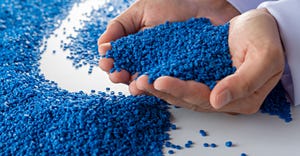Foam tanks restrict evaporation in LNG-fueled container ship
Kawasaki Heavy Industries (KHI) has got the thumbs up from shipping classification society Det Norske Veritas (DNV; Singapore) for a large container ship fueled not by heavy oil, but environmentally friendlier liquid natural gas (LNG), with plastics playing a key role in containment of the fuel.
January 19, 2012
Kawasaki Heavy Industries (KHI) has got the thumbs up from shipping classification society Det Norske Veritas (DNV; Singapore) for a large container ship fueled not by heavy oil, but environmentally friendlier liquid natural gas (LNG), with plastics playing a key role in containment of the fuel.
Phenolic and polyurethane foams combine to lock in LNG fuel source in container vessel. |
Beginning in 2016, new engines on vessels operating in designated emission control areas (ECAs) off the coast of North America must use emission controls that achieve an 80% reduction in NOx emissions. They must also use fuel with less than 1,000 ppm sulfur content as of 2015. One way of achieving this is using LNG as a fuel. The vessel developed by KHI can carry 9,000 20-foot container equivalents and besides reducing NOx emissions by approximately 80%, SOx emissions are reduced by almost 100% and CO2 emission by 30%. It has received an Approval in Principle rating form DNV.
A key component of the vessel is the multiple (International Maritime Organisation (IMO) Type-B prismatic tank system employed to prevent LNG evaporation. It employs thermal insulation panels comprising phenolic resin foam (PRF), rigid polyurethane foam (PUF), and aluminum/plastic sheet layers. Outside of the ECAs, the vessel can utilize conventional fuel oil as a back-up for propulsion if required but it is capable of traversing the Pacific Ocean on a single load of LNG fuel.-[email protected]
You May Also Like


